
Sabine Baring-Gould of Lew Trenchard in Devon, England, was an Anglican priest, hagiographer, antiquarian, novelist, folk song collector and eclectic scholar. His bibliography consists of more than 1,240 publications, though this list continues to grow.
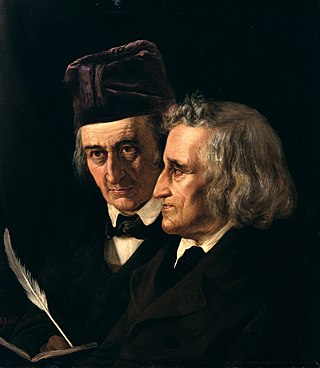
The Brothers Grimm, Jacob (1785–1863) and Wilhelm (1786–1859), were German academics who together collected and published folklore. The brothers are among the best-known storytellers of folktales, popularizing stories such as "Cinderella", "The Frog Prince", "Hansel and Gretel", "Town Musicians of Bremen", "Little Red Riding Hood", "Rapunzel", "Rumpelstiltskin", "Sleeping Beauty", and "Snow White". Their first collection of folktales, Children's and Household Tales, began publication in 1812.

The Easter Bunny is a folkloric figure and symbol of Easter, depicted as a rabbit—sometimes dressed with clothes—bringing Easter eggs. Originating among German Lutherans, the "Easter Hare" originally played the role of a judge, evaluating whether children were good or disobedient in behavior at the start of the season of Eastertide, similar to the "naughty or nice" list made by Santa Claus. As part of the legend, the creature carries colored eggs in its basket, as well as candy, and sometimes toys, to the homes of children. As such, the Easter Bunny again shows similarities to Santa and Christmas by bringing gifts to children on the night before a holiday. The custom was first mentioned in Georg Franck von Franckenau's De ovis paschalibus in 1682, referring to a German tradition of an Easter Hare bringing eggs for the children.

The Wild Hunt is a folklore motif occurring across various northern, western and eastern European cultures, appearing in the religions of the Germans, Celts, and Slavs. Wild Hunts typically involve a chase led by a mythological figure escorted by a ghostly or supernatural group of hunters engaged in pursuit. The leader of the hunt is often a named figure associated with Odin in Germanic legends, but may variously be a historical or legendary figure like Theodoric the Great, the Danish king Valdemar Atterdag, the dragon slayer Sigurd, the Welsh psychopomp Gwyn ap Nudd, biblical figures such as Herod, Cain, Gabriel, or the Devil, or an unidentified lost soul either male or female. The hunters are generally the souls of the dead or ghostly dogs, sometimes fairies, valkyries, or elves.

English folklore consists of the myths and legends of England, including the English region's mythical creatures, traditional recipes, urban legends, proverbs, superstitions, and folktales. Its cultural history is rooted in Celtic, Christian, Nordic and Germanic folklore.
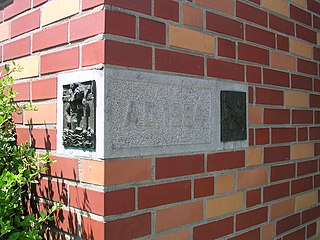
A cornerstone is the first stone set in the construction of a masonry foundation. All other stones will be set in reference to this stone, thus determining the position of the entire structure.
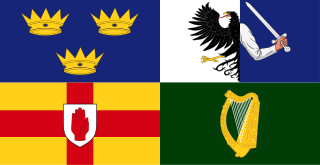
Irish folklore refers to the folktales, balladry, music, dance and mythology of Ireland. It is the study and appreciation of how people lived.
The Aarne–Thompson–Uther Index is a catalogue of folktale types used in folklore studies. The ATU Index is the product of a series of revisions and expansions by an international group of scholars: originally composed in German by Finnish folklorist Antti Aarne (1910), the index was translated into English, revised, and expanded by American folklorist Stith Thompson, and later further revised and expanded by German folklorist Hans-Jörg Uther (2004). The ATU Index, along with Thompson's Motif-Index of Folk-Literature (1932)—with which it is used in tandem—is an essential tool for folklorists.

The church grim is a guardian spirit in English and Nordic folklore that oversees the welfare of a particular Christian church, and protects the churchyard from those who would profane and commit sacrilege against it. It often appears as a black dog but is known to take the form of other animals. In modern times, when black dogs are kept as pets in churches and their attached parsonages, these are called church Grims since they reside on and guard ecclesiastical property.
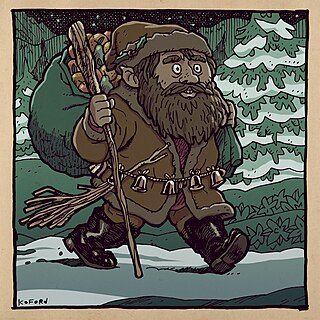
Knecht Ruprecht is a companion of Saint Nicholas as described in the folklore of Germany. He is the most popular gift-bringing character in Germany after Saint Nicholas, Christkindl, and Der Weihnachtsmann but is virtually unknown outside the country. He first appears in written sources in the 17th century, as a figure in a Nuremberg Christmas procession.
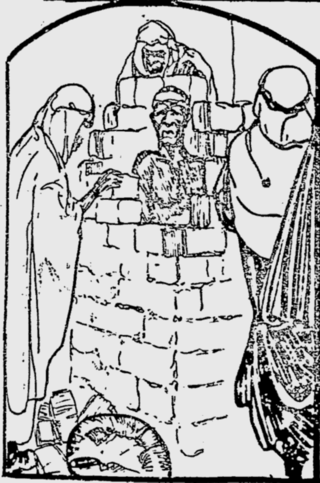
Immurement, also called immuration or live entombment, is a form of imprisonment, usually until death, in which someone is placed within an enclosed space without exits. This includes instances where people have been enclosed in extremely tight confinement, such as within a coffin. When used as a means of execution, the prisoner is simply left to die from starvation or dehydration. This form of execution is distinct from being buried alive, in which the victim typically dies of asphyxiation. By contrast, immurement has also occasionally been used as an early form of life imprisonment, in which cases the victims were regularly fed and given water. There have been a few cases in which people have survived for months or years after being walled up, as well as some people, such as anchorites, who have volunteered to be immured.
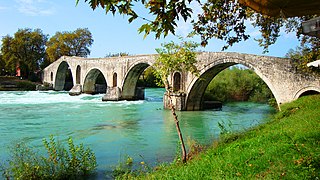
The Bridge of Arta is a stone bridge that crosses the Arachthos river (Άραχθος) in the west of the city of Arta (Άρτα) in northwestern Greece. It has been rebuilt many times over the centuries, starting with Roman or perhaps older foundations; the current bridge is probably a 17th-century Ottoman construction.

Llandegla or Llandegla-yn-Iâl is a village and community in the county of Denbighshire in Wales. In the 2011 census, the community had a population of 567.
"The Dead Brother's Song" is a Greek poem, considered to be the oldest surviving dimotikó, which are traditional Greek folk songs.
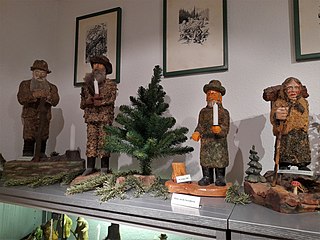
The moss people or moss folk, also referred to as the wood people or wood folk or forest folk, are a class of fairy folk, variously compared to dwarfs, elves, or spirits, described in German folklore as having an intimate connection to trees and the forest. In German, the words Schrat and Waldschrat are also used for a moss person. The diminutive Schrätlein also serves as synonym for a nightmare creature.
The Folklore Society (FLS) is a registered charity under English law based in London, England for the study of folklore. Its office is at 50 Fitzroy Street, London home of the Royal Anthropological Institute of Great Britain and Ireland.

Cornish mythology is the folk tradition and mythology of the Cornish people. It consists partly of folk traditions developed in Cornwall and partly of traditions developed by Britons elsewhere before the end of the first millennium, often shared with those of the Breton and Welsh peoples. Some of this contains remnants of the mythology of pre-Christian Britain.

Venusberg is a motif of European folklore rendered in various legends and epics since the Late Middle Ages. It is a variant of the folktale topos of "a mortal man seduced by the fairy queen visits the otherworld". In German folklore of the 16th century, the narrative becomes associated with the minnesinger Tannhäuser who becomes obsessed with worshipping the goddess Venus.

The Building of Skadar or The Walling of the Skadar or The Founding of Skadar is a poem of the pre-Kosovo cycle of Serbian epic poetry. It is based on the motif of human sacrifice.
The Plague Maiden, is the name given to an apparition from a Lithuanian-Polish folktale. She was said to appear before a plague befell a town. She is often described as waving a red handkerchief through victim's doors, either because it is dyed that way or because it is soaked with blood. Some folktales say that she wears white and has a fiery wreath across her temples. Another such description of her shows that she is an older woman, haggard and tall. Her ailing frame is draped by a decrepit white robe.
















